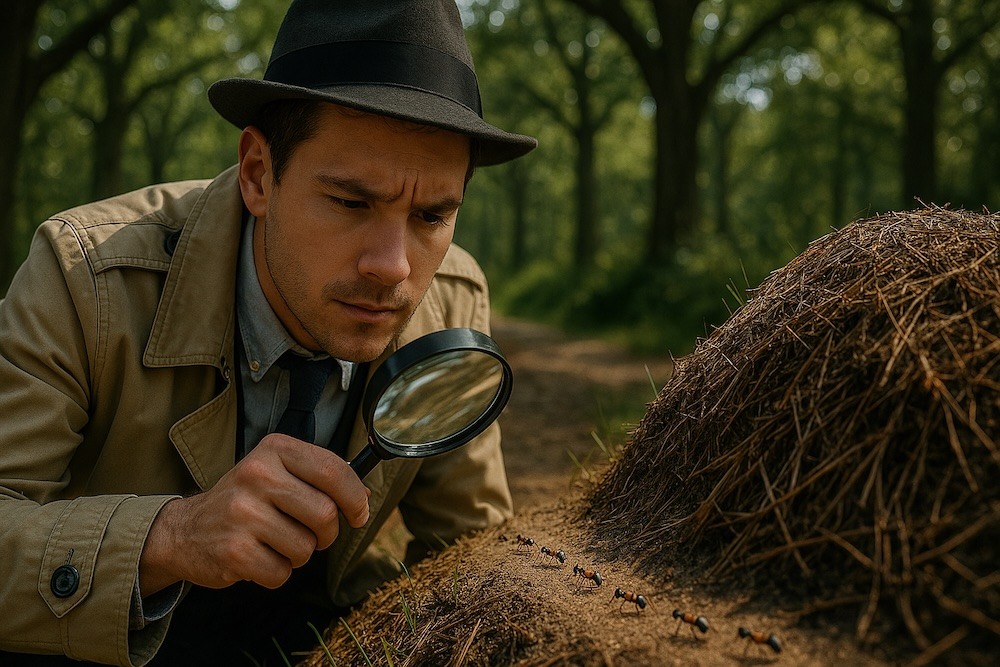
Nature Hides Its Secrets In Relationships: And So Does Complex Sales
Derek Cabrera, co-author of Systems Thinking Made Simple, recently said something that opened up a new insight for me. The topic was the RDS Barbell, which is a way of visualizing and naming relationships between parts of a system, and he said: “Nature hides its secrets in relationships.”
As an example, Derek shared the story about ants, who alone have little intelligence but who, together, based on a simple rule (never cross a pheromone trail,) show remarkable smartness in gathering food. How the ants relate to each other’s tracks is one example of how nature hides its secrets in relationships. It’s not obvious to the human eye but built into the system of ant colonies.
Immediately, I thought about how this concept applies to complex sales. In this profession, we often talk about relationships and how important they are. We know that trust is important and that people prefer to buy from people they have a trusted relationship with.
But this idea of secrets hidden in the relationships got me thinking even more deeply about different relationships and how we can develop them to help our customers and be more effective at sales.
What Is The RDS Barbell?
I’ve written about systems thinking in sales before, specifically the DSRP (Distinctions, Systems, Relationships, Perspectives) concept introduced by Cabrera Labs. DSRP is a lens for understanding how we think.
Distinctions (D) mean that specific things are distinct from one another. Systems (S) mean that each thing is part of a larger whole and contains smaller things. Relationships (R) mean that each thing has a distinct relationship with other things. Perspectives (P) mean that each thing has a different view of another thing. All of these are intertwined and happen simultaneously - change one, and you change the others.
The RDS Barbell is a visual analogy and tool for digging deeper into the concept of relationships:

The concept is simple. On one side of the barbell is one distinct thing, and on the other is another distinct thing. Between them is a relationship, visualized with a line (R), distinguished by a name (D), and the content of its parts listed as a system (S). The insight it provides is profound: When we name the relationship and define its content, we can better understand it, and when we understand it, we can unveil its hidden secrets and share this knowledge with people.
How Can We Use the RDS Barbell in Complex Sales?
In a complex sale, we can use the RDS Barbell to visualize and understand different relationships. One example is that between a salesperson and a prospect. On one side of the barbell, we place the salesperson. On the other side of the barbell, we place their primary contact at a prospect company. These two distinct parts have a relationship between them.
A primary job of a salesperson in a complex sale is to become a detective of relationships and a catalyst of decisions.
How we then name that relationship, the two people and the relationship’s purpose impacts how we perceive it and, therefore, how we approach it. In some models, the language used is one of predator and prey: The salesperson is “hunting,” and the prospect is a “target.” The definition of the relationship would probably be buying/selling, and the content of that relationship would differ quite a bit depending on who you ask. When we name it this way, we impact how the salesperson and the “target” will interact, often to the detriment of both parties.
Alternatively, we can name the relationship “problem-solving,” where the prospect has a problem to solve, and the salesperson is there to help them. When we name the relationship this way, then we have the basis of a relationship that can build trust. We can add words to describe the relationship that goes beyond a transaction and is helpful for its purpose. This relationship then reveals hidden secrets.
Trust in Relationships is Not About Niceties
Often, when we talk about having a good, trust-based relationship with prospects, salespeople think that what they need to do is be warm and friendly, and ask about their weekend. While those things certainly can help warm things up, that is not what trust is based on (read my post on the trust equation here).
Imagine a barbell with you on one side and a prospect on the other. Add a label to the relationship. If you place “small talk” and “I know their kids’ names” as that label, what do you have? A pretty weak relationship.
But if you place “Solve problem X together” and/or “Achieve outcome Y together” there, then you have a relationship that can hold the weight of a long-term engagement.
Every Part of the System Has a Relationship with the Other Parts
We can understand a lot by examining the hidden value in relationships between salespeople and their primary contacts. But in complex sales, there need to be many more relationships than just that one.
And that’s where the RDS barbell really goes to work. If you envision the primary contact on one side of a barbell and then place another stakeholder on the other, you begin to reveal even more valuable hidden secrets.
Often, one might think that the salesperson’s job is simply to get to know all the stakeholders and convince them that they need what the salesperson is selling.
But when we look at the barbell, we see that there is a great deal going on that is not clear on the surface. For example, the primary contact’s direct manager may be one of your stakeholders. The relationship between these two people has a direct bearing on how well the sales process will go.
Imagine a relationship between them that is adversarial. The manager does not trust the report’s decision-making, and the report resents the manager’s involvement. In this case, the salesperson will lose the sale if they don’t address this hidden problem.
Imagine, on the other hand, a situation in which the manager and the primary contact have a long-term relationship based on mutual trust and respect. This sale will likely go more smoothly. But the salesperson can’t know which one they’re dealing with unless they strive to understand the relationship itself.
For every stakeholder in the organization, there is a unique relationship with the main contact, as well as with each other. Each relationship holds its own secrets that only become apparent when the salesperson investigates.
Likewise, each stakeholder has a unique relationship with the defined problem and outcome. The primary contact may have an emotional relationship with the problem of “If we don’t solve this, I will be miserable at work every day,” while other stakeholders may not even see a problem that needs addressing and may have no relationship with it.
A salesperson who can uncover all of the relevant relationships within the buying system and its stakeholders is in a much better position to make a sale (or discern that a sale won’t be made and move on to a better prospect). Thus, one of the primary jobs of the salesperson in a complex sale is to become a detective of relationships and a catalyst of decisions.
Only when that work is done can they become facilitators of those relationships and get everyone on board with a shared understanding of the problem and its possible solutions.
In my opinion, a structured approach to uncovering the nature of relationships within the buying system is a major key to helping sales teams become more effective. What are you doing in your organization to help your salespeople become relationship detectives?

By George Brontén
George is the founder & CEO of Membrain, the Sales Enablement CRM that makes it easy to execute your sales strategy. A life-long entrepreneur with 20 years of experience in the software space and a passion for sales and marketing. With the life motto "Don't settle for mainstream", he is always looking for new ways to achieve improved business results using innovative software, skills, and processes. George is also the author of the book Stop Killing Deals and the host of the Stop Killing Deals webinar and podcast series.
Find out more about George Brontén on LinkedIn







